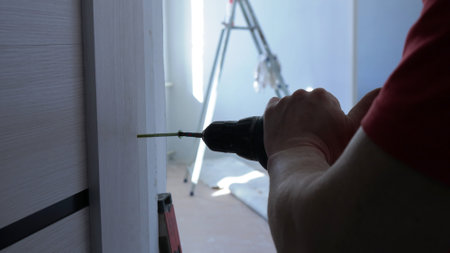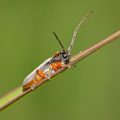Understanding Common UK Household Pests
When it comes to keeping your home comfortable and safe, understanding which pests are most prevalent in British households is the first step towards effective pest control. The unique blend of the UK’s temperate climate, frequent rainfall, and a mix of period properties and modern flats creates the ideal environment for a variety of unwanted guests. From historic terraced houses in London to countryside cottages in the Cotswolds, every home faces its own set of pest challenges. Below is an overview of the most common household pests found across the UK, alongside their preferred environments and typical issues they cause:
| Pest | Common Locations | Main Issues | Seasonal Patterns |
|---|---|---|---|
| Mice & Rats | Lofts, kitchens, under floorboards | Gnawing wires, food contamination, droppings | More active in autumn & winter as they seek warmth indoors |
| Wasps | Roof spaces, sheds, garden walls | Nesting hazards, painful stings | Peak in late summer and early autumn |
| Bed Bugs | Beds, sofas, upholstered furniture | Bites causing irritation, difficult eradication | Year-round but often discovered after travel or second-hand furniture purchase |
| Ants | Kitchens, conservatories, patios | Food infestation, visible trails | Mainly spring and summer months |
| Clothes Moths | Wardrobes, carpets, soft furnishings (especially wool) | Damage to textiles and natural fibres | Most problematic during warmer months |
| Silverfish | Bathrooms, kitchens (damp areas) | Damage to paper, books, wallpaper paste | Thrives year-round in humid conditions |
| Fleas | Pets’ bedding, carpets, soft furnishings | Irritating bites for both pets and humans | Mainly late summer to autumn but can persist indoors all year with central heating |
The Unique Challenges of UK Climate & Housing Styles
The persistent dampness and cooler temperatures typical of British weather create ideal breeding grounds for pests seeking warmth and shelter. Older Victorian or Georgian homes often have more entry points—think chimneys, cellars and sash windows—making them particularly vulnerable. On the other hand, new-build flats may face infestations due to shared walls and communal waste areas. Recognising these regional and architectural vulnerabilities is crucial when planning an effective pest control strategy tailored for British homes.
2. Preventative Practices for Pest-Free Living
Creating a pest-resistant home in the UK is as much about thoughtful daily habits as it is about larger interventions. British homes, with their unique period features and characteristic layouts, require tailored approaches that safeguard both comfort and charm. Below, discover proactive measures that blend seamlessly into your routine while respecting the architecture and aesthetics of your space.
Daily Habits for a Pest-Resistant Home
| Practice | How It Works | UK-Specific Tips |
|---|---|---|
| Regular Cleaning | Reduces crumbs and spills that attract pests. | Pay special attention to skirting boards and under radiators where dust gathers in older homes. |
| Proper Food Storage | Keeps food sealed away from rodents and insects. | Use airtight tins or jars—iconic in many British kitchens—for cereals, biscuits, and pet food. |
| Rubbish Management | Prevents bin overflow that attracts foxes, rats, and flies. | Secure wheelie bins with tight lids and use council-provided compost caddies for food waste. |
| Ventilation | Discourages damp-loving pests like silverfish and woodlice. | Utilise traditional sash windows or air bricks to maintain airflow without compromising on period detail. |
Pest-Proofing Without Compromising Character
Preserving the integrity of original features is key when pest-proofing British homes. For instance, draught-proofing strips can be discreetly fitted to doors and sash windows to keep out insects without altering heritage details. Mesh covers on vents allow airflow yet block entry points for mice and wasps—a practical solution for Victorian terraces or listed cottages alike. When sealing gaps around floorboards or pipework, opt for materials that blend with existing finishes, such as natural-coloured sealant or reclaimed timber trims.
Garden Maintenance: The First Line of Defence
Your outdoor space plays a crucial role in keeping indoor areas pest-free. Regularly trimming hedges and lawns eliminates hiding spots for rodents and slugs. Compost heaps should be kept at a distance from the house, using lidded bins to deter wildlife. If you have a shed or greenhouse, check frequently for signs of infestation—especially during wetter months typical of the British climate.
Aesthetic Touches That Deter Pests
Clever design choices can enhance both your home’s beauty and its resilience against unwanted visitors. Lavender sachets in wardrobes repel moths while adding a classic touch; decorative ceramic bowls filled with dried citrus peels keep ants at bay on kitchen shelves. These subtle interventions help maintain a sense of place while subtly supporting your pest prevention strategy.

3. Eco-friendly and Local Pest Control Solutions
When it comes to maintaining the harmony of UK homes, balancing effective pest control with environmental responsibility is at the forefront of contemporary design and lifestyle choices. British homeowners are increasingly gravitating towards sustainable methods that protect both their interiors and the surrounding environment. In this section, we explore popular eco-friendly pest control options, natural remedies, and ethical products, as well as trusted local services that uphold these values.
Natural Remedies for Common UK Pests
From chic Victorian terraces in London to countryside cottages in the Cotswolds, British residents favour natural solutions that blend seamlessly with their home’s aesthetic. Here are some tried-and-true natural remedies:
| Pest | Eco-friendly Solution | Design Sensibility |
|---|---|---|
| Moths | Cedarwood blocks, lavender sachets | Adds subtle fragrance and rustic elegance to wardrobes |
| Ants | Lemon juice spray, cinnamon barriers | Simple kitchen staples; maintains minimalist look |
| Spiders | Peppermint oil spray | Freshens air and complements modern decor trends |
Ethical & Sustainable Pest Control Products
The UK market now offers a range of environmentally conscious pest control products that align with modern design values. Look for solutions labelled as biodegradable, non-toxic, or cruelty-free. Popular brands such as Ecozone and Neudorff offer products that efficiently tackle pests without compromising your homes style or the planets wellbeing.
Key Features of Ethical Products:
- Biodegradable packaging to reduce household waste
- No harsh chemicals—safe for children, pets, and pollinators
- Sleek product designs suitable for display in contemporary spaces
Local Services with an Eco-Conscious Approach
Across the UK, many local pest control services have adopted greener methodologies. These businesses prioritise humane removal techniques, integrated pest management (IPM), and minimal use of synthetic chemicals. When selecting a local provider, seek out companies accredited by organisations such as the British Pest Control Association (BPCA) who demonstrate a commitment to environmental stewardship.
Benefits of Choosing Local Eco-Friendly Services:
- Personalised assessments tailored to unique property layouts and historic features
- Use of natural deterrents that preserve interior finishes and garden design
- Support for community-based businesses aligned with sustainable living principles
By embracing these eco-friendly solutions and collaborating with conscientious local experts, UK homeowners can protect their living spaces while honouring both environmental values and refined interior design aesthetics.
4. Dealing with Infestations: When to Call the Professionals
Even the most diligent homeowner can encounter a stubborn pest problem that simply won’t budge with standard at-home solutions. Recognising when it’s time to bring in professional help is crucial for maintaining both the safety and aesthetic integrity of your home. Here’s how to determine when an infestation is beyond a DIY fix, and how to select a reputable pest control service within the UK.
Signs That It’s Time for Professional Pest Control
| Warning Sign | What It Means | Immediate Action |
|---|---|---|
| Repeated Sightings | Multiple pests spotted regularly, especially during daylight hours. | Document sightings, note times and locations. |
| Structural Damage | Evident gnaw marks, holes in woodwork, or chewed wires. | Avoid further disturbance; take photos for professionals. |
| Unusual Smells | Persistent musty or foul odours in certain rooms. | Investigate but do not touch possible nesting areas. |
| Nesting Evidence | Nests, droppings, or shredded materials found indoors. | Minimise access to affected areas until experts arrive. |
| Ineffective DIY Measures | Pests persist despite repeated at-home treatments. | Cease using over-the-counter products; consult experts. |
Selecting a Trusted UK Pest Control Service
The British pest control industry is well-regulated, offering homeowners peace of mind when selecting a provider. Look for companies registered with the British Pest Control Association (BPCA), as members adhere to strict codes of practice and ongoing training. Recommendations from neighbours or local community groups can also provide valuable insight into a company’s reputation and effectiveness within your area.
What to Ask Before Booking a Service:
- Are you BPCA or NPTA registered?
- Can you provide a written estimate and treatment plan?
- What eco-friendly options do you offer?
- Do you guarantee your work, and what does the guarantee cover?
- Is aftercare support available if problems persist?
The Value of Local Expertise
Pest control challenges in UK homes can be highly regional—what plagues a Victorian terrace in London may differ from issues faced in rural Yorkshire cottages. Local firms are often best positioned to understand these nuances, utilising targeted methods that respect both heritage property features and modern living requirements.
5. Integrating Pest Control into Your Home’s Design
Blending pest prevention with the distinctive charm of British interiors requires a thoughtful approach that respects both aesthetics and functionality. Whether your home boasts the ornate details of a Victorian terrace or the clean lines of a modern flat, here are creative solutions to ensure your spaces remain stylishly pest-free.
Built-In Solutions for Seamless Style
Consider integrating pest control at the renovation stage or during routine updates. Custom joinery and fitted cabinetry can discreetly conceal traps or mesh barriers without interrupting the room’s visual flow. For historic homes, opt for woodwork and finishes that echo period features while cleverly hiding preventative elements.
Pest Prevention Meets British Design
| Design Element | Pest Control Function | How It Maintains Character |
|---|---|---|
| Sash Window Brushes | Blocks entry points for insects | Keeps traditional window appearance intact |
| Integrated Kickboard Vents | Improves airflow, deters damp-loving pests | Matches cabinetry style; subtle visibility |
| Decorative Floor Grilles with Mesh | Prevents rodent and insect ingress | Available in antique brass or contemporary steel |
Choosing Materials with Dual Purpose
Select hardwearing, easy-to-clean surfaces like painted timber or sealed stone tiles, especially in kitchens and utility rooms. These not only reflect classic British taste but also reduce pest harbourage. Opt for natural deterrents such as lavender sachets tucked into built-in shelving—blending scent with storage while warding off moths.
Maintaining Historic and Modern Harmony
If you own a listed property, consult local conservation officers before any modifications. Use removable, non-invasive screens for fireplaces or period windows to respect heritage requirements while providing effective protection. In modern settings, opt for minimalistic insect screens or magnetic door seals that align with contemporary design cues.
Your Home, Beautifully Defended
By merging pest management with interior design, you create a living space that’s both visually harmonious and practically resilient—celebrating the best of British character while ensuring peace of mind.
6. Legal and Community Guidelines for UK Residents
When tackling pest control in UK homes, its vital to understand not only the practical aspects but also the legal and communal framework guiding your actions. Regulations, especially in heritage-rich areas, and local council responsibilities play a crucial role in shaping how residents manage pests while respecting their surroundings.
Understanding Pest Control Laws and Listed Building Considerations
If your home is a listed building or lies within a conservation area, special rules apply. The use of certain chemicals or invasive pest control methods may be restricted to protect architectural integrity and historical value. Always consult with your local planning authority before undertaking significant pest management measures in these properties.
| Area Type | Special Requirements | Who to Contact |
|---|---|---|
| Listed Buildings | Consent needed for structural changes; restrictions on chemical treatments | Local Planning Authority |
| Conservation Areas | No unauthorised external alterations; eco-friendly solutions preferred | Council Conservation Officer |
| Modern Homes | Standard regulations apply; mindful disposal of pesticides required | Environmental Health Department |
The Role of Local Councils: Advice & Responsibilities
Councils across the UK offer guidance, and in some cases, services for pest control—especially for public health risks like rats or wasps. However, responsibility often falls on homeowners for managing infestations within private property lines. Regularly check your borough’s website for up-to-date advice, approved contractors, and any available subsidies or community schemes.
Key Council Services Commonly Offered:
- Pest identification and risk assessment visits
- Subsidised or free treatment for certain infestations (e.g., rodents)
- Education on preventative measures specific to your local area
- Guidance on safe pesticide disposal and wildlife protection laws
Your Responsibilities as a Homeowner or Tenant:
- Address infestations promptly to avoid penalties under the Public Health Act 1936 and Prevention of Damage by Pests Act 1949
- Use only licensed pest control operators where required by law (e.g., handling certain rodenticides)
- Avoid harming protected species such as bats or birds during treatment—seek specialist advice if unsure
- Inform landlords promptly if you rent and encounter significant infestations, as they may be legally responsible for intervention under tenancy agreements or housing standards legislation
Navigating pest control in the UK is about balancing effective action with respect for both your neighbours and the nation’s treasured architecture. By following local guidelines and staying informed of your legal obligations, you contribute to a healthier, more harmonious community—and preserve the unique character of British homes.


